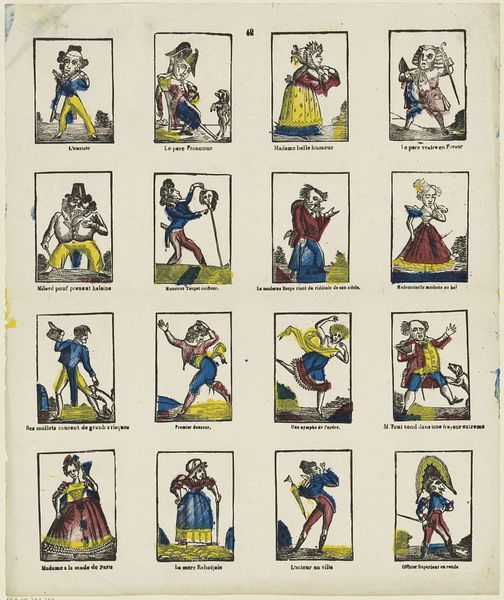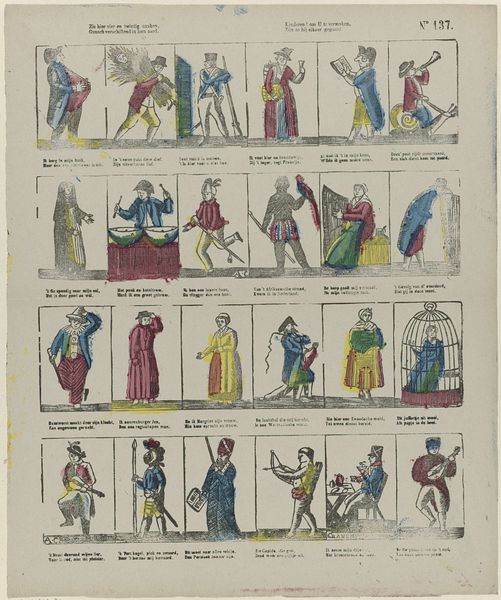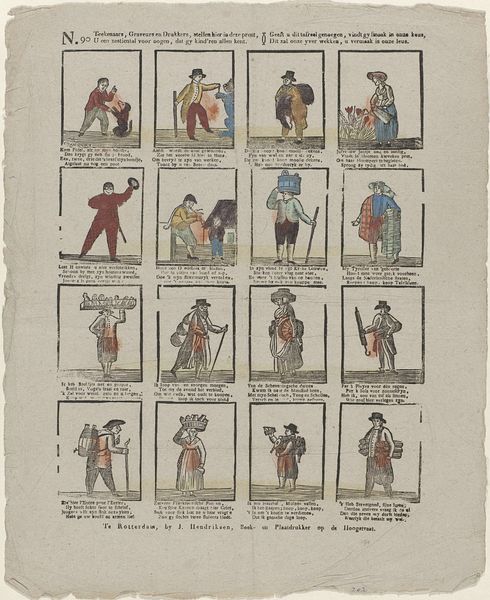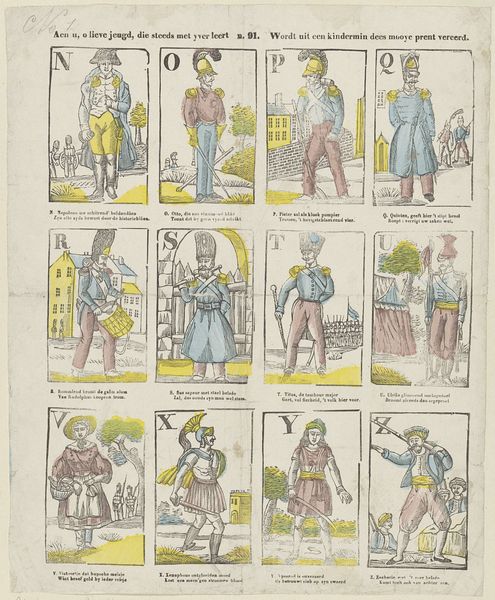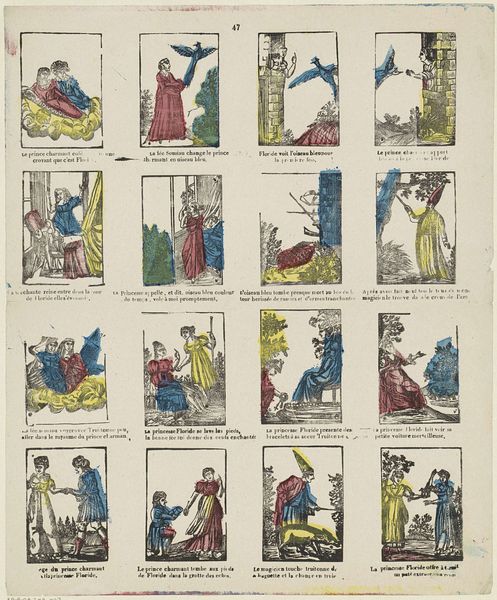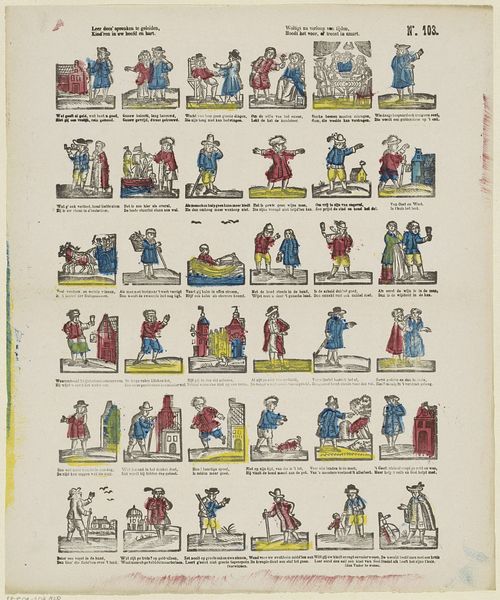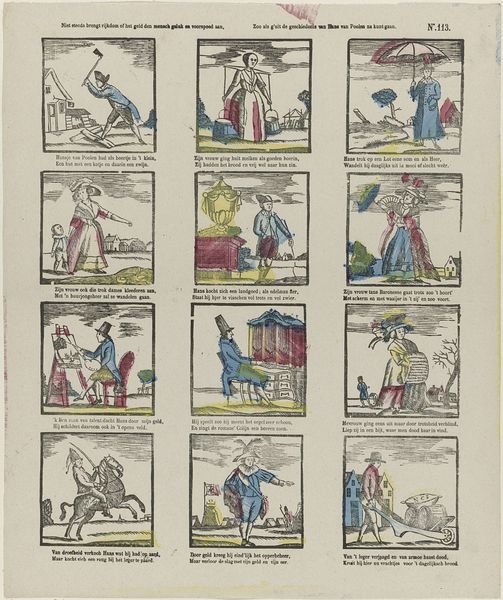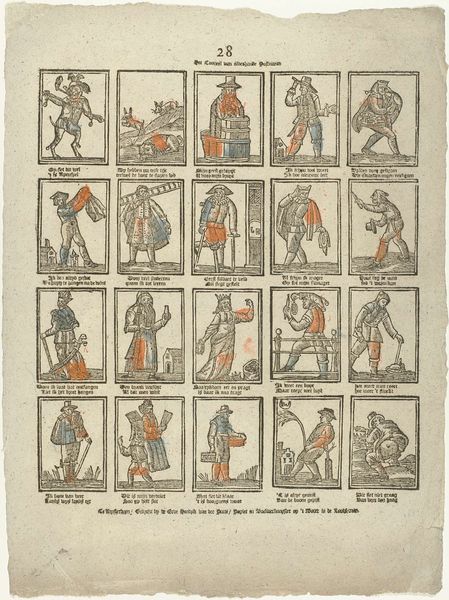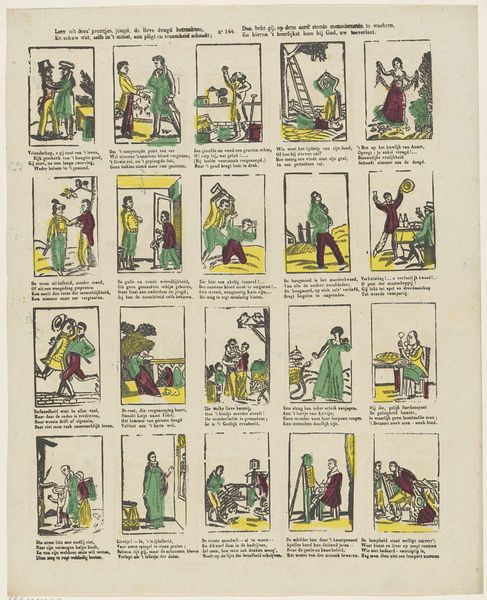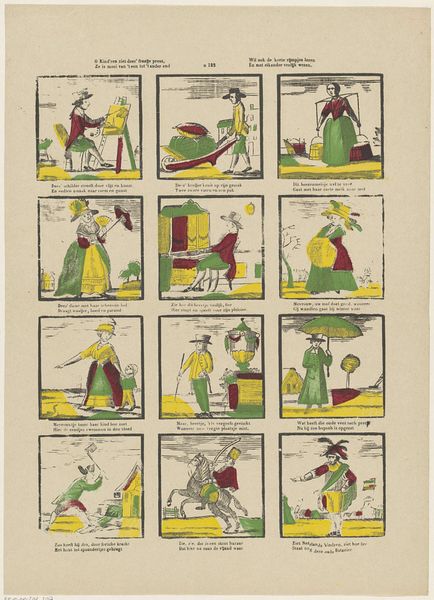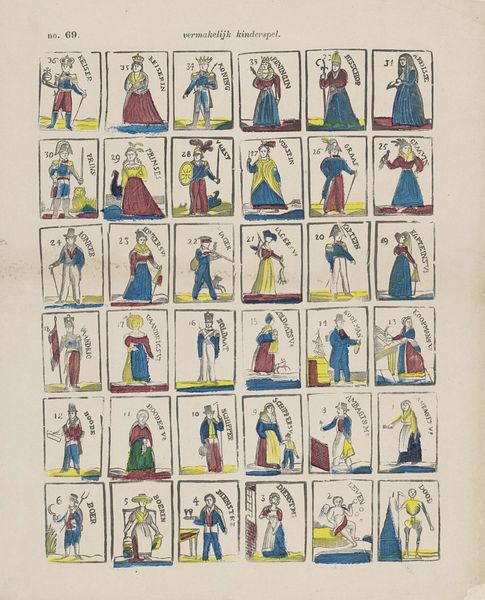
lithograph, print
#
narrative-art
#
lithograph
# print
#
caricature
#
figuration
#
genre-painting
Dimensions: height 315 mm, width 386 mm
Copyright: Rijks Museum: Open Domain
Editor: Here we have “Onderscheidenen voorstellen,” or “Representing Distinguished People,” a lithograph print from somewhere between 1827 and 1894, here in the Rijksmuseum collection. It's quaint! Almost like a page from a children's book, with all these little characters. How would you interpret this work in its historical context? Curator: It’s a fascinating piece of social commentary when we look at its cultural roots. Consider the proliferation of printmaking during this period and the rising middle class with access to these images. This lithograph presents a cross-section of society through caricature. How do you think these exaggerated portrayals played into the social dynamics of the time? Editor: I guess the exaggeration is interesting – it definitely leans towards mockery. But who exactly is being mocked? Curator: Exactly. These images weren’t simply about representation; they were about power. By depicting "distinguished people" in such a manner, the artist, M. Hemeleers-van Houter, invites viewers to critically assess the social hierarchy and perhaps even question its legitimacy. How might the viewers' own social standing influence their reading of these caricatures? Editor: So it’s not just funny drawings, but a visual way to challenge the established order. Makes you wonder who the target audience *really* was! Someone not in those boxes, probably. Curator: Precisely. It reflects the changing dynamics of power and representation in 19th-century society. Examining art through the lens of social history like this helps us uncover hidden narratives and understand its complex public role. I find that shift in perception deeply rewarding, don't you? Editor: Absolutely! It's not just *what* is depicted, but *who* is doing the depicting, and for whom. That’s an eye-opener.
Comments
No comments
Be the first to comment and join the conversation on the ultimate creative platform.
